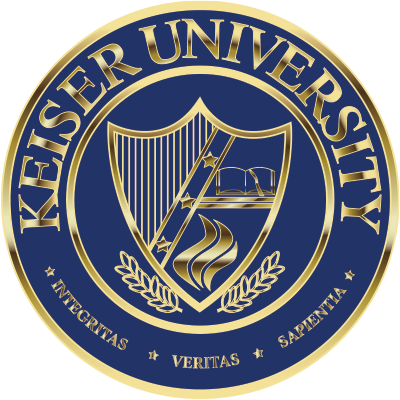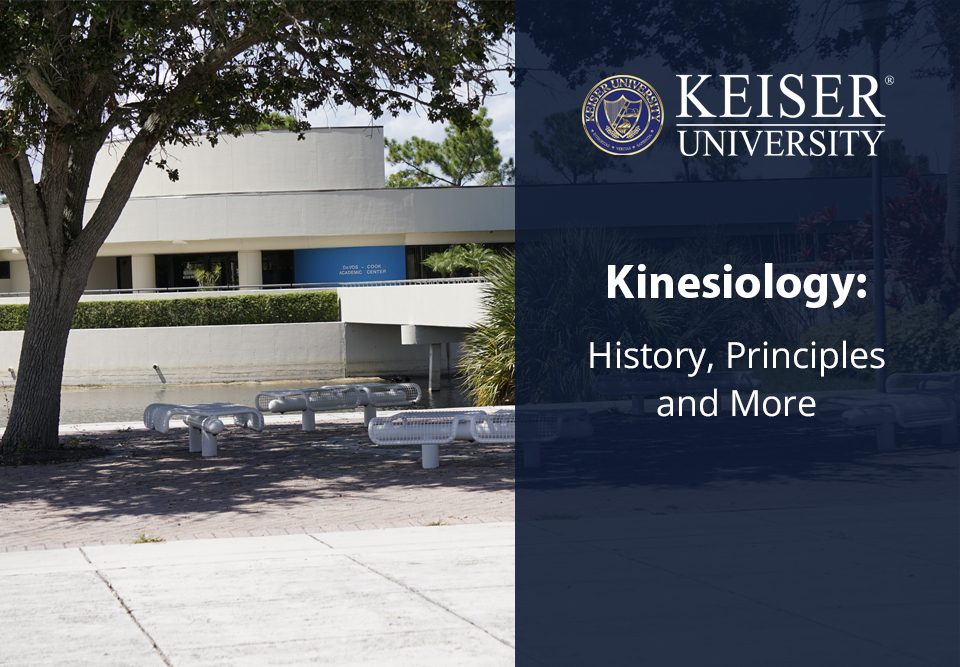Are you interested in a career in exercise science, sports medicine or physical therapy? If so, you’ll need an in-depth understanding of kinesiology. From the basic principles of kinesiology to the history of kinesiology, there’s a lot to learn about this important field of study.
What Is Kinesiology?
What is the study of kinesiology and what does it entail? Kinesiology refers to a branch of science that focuses on the mechanics of the human body and how it moves.
Within the field of kinesiology, there are a few foundational elements, including anatomy, physiology and biomechanics (or human movement). By understanding these basic components of kinesiology and the importance of the field to overall health and wellness, you can determine whether kinesiology may be right for you.
Basics of Kinesiology
Kinesiology refers to the study of human movement, but there are a few components you will need to focus on to understand how different parts of the body move and work together. These basic areas of study include anatomy, physiology and biomechanics.
Anatomy
Anatomy refers to the study of the human body. Understanding all the different muscle groups and bones and how they interact is a must in kinesiology because these concepts are so often interrelated. This is especially true when it comes to anatomical position, which is used in kinesiology to understand the region or part of the body in a specific position or stance and how it relates to human movement.
Meanwhile, understanding anatomical structure is useful for kinesiologists, exercise scientists and physical therapists who must apply this knowledge to help patients recover from injuries, build strength and improve motor skills.
Physiology
Physiology is another vital component of kinesiology, referring to the study of the body’s responses to different movements. Known as the science of life, physiology focuses on understanding the mechanisms of the body and how they function under normal circumstances. When applied to a field like physical therapy or exercise science, physiology may answer important questions about how body parts function and can be improved upon or maintained through exercise and stretches.
While both physiology and kinesiology are concerned with exercise and performance, it’s important to understand that these are two different branches of science. Within the field of kinesiology, physiology is generally considered to be a subset. In other words, it is a concept that needs to be understood and applied to achieve effective practices.
Biomechanics
Another part of kinesiology is the study of mechanical laws as they relate to the movement of the human body. Also known as biomechanics, this area of science looks closely at different parts of the body (including muscles, bones, tendons and ligaments) and how they move. These parts of the body must often work together to perform various movements, so understanding how these components work together is a vital part of kinesiology as a whole.
In some cases, musculoskeletal conditions or other health issues may prevent these parts of the body from working together effectively, so knowing how to identify these issues is crucial within kinesiology and related fields, such as physical therapy and exercise science.
Importance of Kinesiology
Why is kinesiology so important, anyway? For starters, kinesiology is at the core of many areas of medicine, including exercise science, sports medicine and physical therapy. The way the human body moves directly impacts just about every aspect of life, including health and wellness and mental well-being.
Likewise, in the sense that kinesiology is related to sports and athletics, it affects communities culturally and economically, driving growth and bringing people together. With a solid understanding of kinesiology, it is possible to work in such positions as:
- Exercise physiologist
- Exercise scientist
- Fitness instructor
- Public health officer
- Strength and conditioning coach
- Lifestyle management consultant
For those interested in careers in sports medicine, exercise science, physical therapy or similar fields, kinesiology is one of many areas of science that you will need to master.
History of Kinesiology
While kinesiology may now be part of our everyday study of the human body and its mechanics, this wasn’t always the case. By understanding how the field of kinesiology got its start and how it has evolved over the years, you can see how far this area of study has come and how its principles are applied in everyday medicine.
Foundations of Kinesiology
According to the Alberta Kinesiology Association, the field has a rich history that dates back thousands of years to ancient Greece. During these early years, it is believed that the philosopher Aristotle first observed the movements of both humans and animals in his analysis of natural science.
Over the following centuries, the field continued to grow as researchers and scientists began to study and develop their understanding of anatomy, physiology and biomechanics. By the 19th and 20th centuries, researchers started applying principles of physics and engineering to kinesiology.
By the second half of the 20th century, kinesiology concepts were applied to more practical matters, including exercise and physical therapy, for the first time. These new studies, combined with innovative technologies (like the MRI) made it possible for scientists to study human movement in ways that were previously impossible.
Today, kinesiology is an expansive field encompassing a variety of disciplines, ranging from exercise science and sports medicine to physical therapy and rehabilitation.
Scope of Practice
Across the globe, kinesiology is known and respected as a professional practice, with professionals working across a wide range of disciplines. Many who have studied kinesiology work as rehabilitation providers, helping patients suffering from musculoskeletal conditions and disorders or injuries from accidents. Likewise, kinesiologists work in sports medicine and exercise science, helping athletes improve their muscle strength and achieve their goals.
Licensing and Regulation
One of the most common questions people tend to have about working in the field of kinesiology is “What kind of licensing or certification is required?”
You may be surprised to learn that there is no widely recognized licensure for kinesiology professionals. However, depending on the specific area of kinesiology you are interested in, there may be licensing or certification requirements that can vary from state to state.
For example, if you are interested in working as an athletic trainer, then you may need to get certified by the Commission on Accreditation of Allied Health Education Programs (CAAHEP) or a similar governing body. Likewise, if you want to work as a physical therapist, then a degree in kinesiology or a related field may be required.
Kinesiology Techniques
Many kinesiology techniques can be applied in physical therapy, exercise science and sports medicine to help build muscle strength, improve motor skills and increase range of movement.
All kinesiology techniques and treatments are custom-tailored to meet a patient or client’s precise needs and goals. However, some of the most utilized techniques within the field include:
- Acupressure
- Lymphatic massage
- Resistance training
- Cardiovascular training
- Postural assessments
- Balance and agility training
Principles of Kinesiology
Within the broad field of kinesiology, there are a few principles that professionals must keep at the forefront of their practice. These include such principles as adaptation through exercise, neuroplasticity and motor redundancy. Ultimately, all these principles must be applied to best serve clients and patients who need physical therapy, rehabilitation or any related treatment.
Adaptation Through Exercise
Many movement disorders, musculoskeletal conditions and injuries can be addressed and treated through tailored exercise techniques. The idea is that exercise can help the body adapt and build strength over time to address symptoms, relieve pain and help patients achieve health and wellness goals.
For example, balance intervention programs for seniors can help reduce trip and fall risks. Likewise, flexibility programs may help increase a patient’s range of motion or decrease the risk of injury for an athlete. By understanding how the body adapts and changes with ongoing exercise, kinesiologists can provide their clients with the best treatment plans for their short- and long-term health and wellness needs.
Neuroplasticity
Another key concept behind kinesiology is the idea of neuroplasticity, which refers to the relation between movement and actual changes in the brain. It has been found that the human brain can acquire new motor skills when it is exposed to new stimuli and experiences. This, in turn, leads to the formation of new neural pathways that can help the brain adapt in different ways.
The concept of neuroplasticity includes both adaptive and maladaptive plasticity, with the former referring to the direct impact of physical activity on brain function. Maladaptive plasticity, on the other hand, refers to negative impacts on the brain that may result from physical activity—such as a stroke patient who may suppress limb movement due to broken neural paths.
Motor Redundancy
Finally, the idea of motor redundancy, as it relates to kinesiology, refers to the idea that there are essentially an unlimited number of ways in which the body’s nervous system can achieve a task performed by the human body. This includes all the different kinematic configurations, muscle redundancies and motor unit redundancies that could be generated to achieve the same task.
Those in the field of kinesiology must have a strong understanding of motor redundancy and its basic principles to create effective and personalized treatment plans for physical therapy patients and sports medicine clients.
Interested in Studying Kinesiology?
The way our bodies move can have a major impact on our overall quality of life, which is why anyone who aspires to go into exercise science, sports medicine or any number of related fields should have a solid understanding of the driving principles behind kinesiology. Likewise, understanding how kinesiology techniques can be applied to other fields (such as physical therapy) can help professionals better serve their patients and clients.
If you’re interested in studying kinesiology and other aspects of exercise science, Keiser University’s Master of Science in Exercise and Sport Science may be right for you. This program is offered entirely online and can be completed in as little as 12-24 months, with courses covering topics such as kinesiology, nutrition and biomechanics.
Get in touch with one of Keiser University’s graduate admissions counselors to learn more about our kinesiology program or start your application today.






 The instructors at Keiser University impacted my life. They believed in my ability to become a great graphic designer, regardless of how I felt about my skills. KU helped to prepare me for the real world and got me to where I am today.
The instructors at Keiser University impacted my life. They believed in my ability to become a great graphic designer, regardless of how I felt about my skills. KU helped to prepare me for the real world and got me to where I am today.
